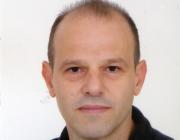Abstract:
This study examined the effect of recovery time on the maintenance of power output and the heart rate response during repeated maximal rowing exercise. Nine male, junior rowers (age: 16 ± 1 years; body mass: 74.0 ± 9.1 kg; height: 1.78 ± 0.03 m) performed two consecutive all-out 1000 m bouts on a rowing ergometer on three separate occasions. The rest interval between the two bouts was 1.5 (INT1.5), 3 (INT3) and 6 min (INT6), allocated in random order. Power output was averaged for each 1000 m bout and for the first and last 500 m of each bout. Heart rate kinetics were determined using a two-component exponential model. Performance time and mean power output for the first bout was 209 ± 3 s and 313 ± 10 W respectively. Recovery of mean power output was incomplete even after 6 min (78 ± 2, 81 ± 2 and 84 ± 2% for INT1.5, INT3 and INT6 respectively). Mean power output after INT6 was higher (p < 0.01) only compared with INT1.5. Power output during the first 500 m of bout 2 after INT6 was 10% higher compared with the second 500 m. During INT1.5 and INT3 power output during the first and the second 500 m of bout 2 was similar. Peak heart rate (∼197 b·min-1) and the HR time constant (∼13 s) were unaffected by prior exercise and recovery time. However, when the recovery was short (INT1.5), HR during the first 50 s of bout 2 was significantly higher compared with corresponding values during bout 1. The present study has shown that in order to maintain similar power outputs during repeated maximal rowing exercise, the recovery interval must be greater than 6 min. The influence of a longer recovery time (INT6) on maintenance of power output was only evident during the first half of the second 1000 m bout. ©Journal of Sports Science and Medicine.
Notes:
cited By 15
Website

